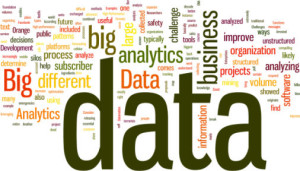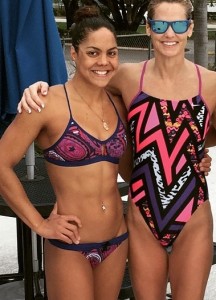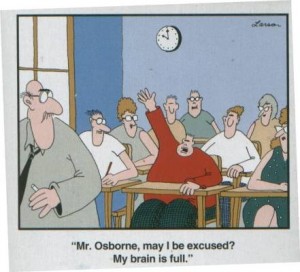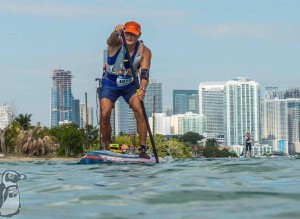As a university professor, I often get asked ‘what is a scientist?’ What do these geeks actually do? Fortunately, I teach a university-level Research Methods course. Thus, I have a  forum for giving a somewhat elaborate response to my students. I think what’s confusing to the untrained or novel eye is that social media has witnessed a proliferation of those who claim to be ‘researchers.’ For the purpose of this article, I’ll treat ‘researchers’ and ‘scientists’ synonymously. Nevertheless, I will address the question of what exactly a scientist is. And more specifically, what a professional scientist actually does. Furthermore, I’m writing this from the standpoint of someone trained in the biological sciences because I’m not familiar with the manner in which chemists or physicists conduct ‘science.’ So to my students who have asked this question, I’ve finally put pen to paper, or more precisely, fingers to keyboard, and given you a somewhat limited answer to a rather complex question.
forum for giving a somewhat elaborate response to my students. I think what’s confusing to the untrained or novel eye is that social media has witnessed a proliferation of those who claim to be ‘researchers.’ For the purpose of this article, I’ll treat ‘researchers’ and ‘scientists’ synonymously. Nevertheless, I will address the question of what exactly a scientist is. And more specifically, what a professional scientist actually does. Furthermore, I’m writing this from the standpoint of someone trained in the biological sciences because I’m not familiar with the manner in which chemists or physicists conduct ‘science.’ So to my students who have asked this question, I’ve finally put pen to paper, or more precisely, fingers to keyboard, and given you a somewhat limited answer to a rather complex question.
Key Points to Remember
- Sitting in your Garanimals® while doing a PubMed search does not make you a scientist.
- Being published in a peer-reviewed journal does not make you a scientist (I can see the confusion in many faces now).

- Professional scientists are typically involved in a series of steps that are unseen by non-scientists. In the short run, publication is the goal of professional scientists. In the long run, if you want to make a significant impact on our field, you need to conduct original investigations (i.e., generate original data).
- Conducting original investigations is the hallmark of ‘doing science.’ If you’ve never done this, then you’re not a scientist. Review papers and meta-analyses are great for giving a ‘snapshot’ of the current state of science in a given field; however, they are not original investigations. They’re summaries of other original investigations (i.e., the work of other scientists).

- It is easy to criticize a study. Students in my Research Methods class are often surprised as to the ease of finding limitations in studies published in peer-reviewed journals. However, try being the PI (principal investigator) of a study. When you walk a mile in someone else’s shoes, you’ll realize that banging your keyboard in the comfort of your underwear ain’t nothing like being the PI of a study. It’s the difference between being a movie critic and someone who makes movies.
- You can indeed be very good at using the scientific method in your profession (e.g., personal trainer, dietitian, etc.) without being an actual scientist. I wholeheartedly implore everyone in the fitness-nutrition fields to embrace science. It would be like embracing medicine. You don’t have to be an MD to do that.
Let me outline the typical steps that a scientist performs before you, John Q. Public, can sit in your La-Z-Boy chair and leisurely read a peer-reviewed publication. I’m coming from a background of having done both extensive animal (i.e., rodents, birds, etc) and human research.1-7 The process is similar.
- Ideation phase – this is perhaps the most fun. Why? Because it’s free and anyone can do it. In this phase, you basically come up with an experimental idea. Interestingly, these ideas can arise at any time: while sunbathing, working out, or after consuming 6 beers. For instance, my idea of coming up with the initial high protein diet (4.4 g/kg/d) arose from a random conversation with a recreational bodybuilder who admitted to eating boatloads of protein.8 I asked myself: “what if we just got trained guys and girls to just eat a lot of protein?” Simple enough, right? Uh no. The hard part comes after this.
- Delineating the experimental protocol – now you put the pedal to the metal and write the IRB proposal (Institutional Review Board) and Informed Consent to submit to the university. If you work for a private clinical research organization or CRO, there are external IRBs that you can submit your proposal to. If you don’t like writing, you’ll hate this phase. At my university, it requires that you fill out a 20-page form. Yeah fun. Like stepping on a porcupine. I think pretty much every scientist dislikes this phase. Why? Because the folks who often review your IRB proposal are not experts in your particular field. Thus, the questions you receive regarding your protocol are often bizarre. But this is a hurdle every scientist must jump over before you initiate subject recruitment.

- Subject recruitment – after getting IRB approval, which can take anywhere from 1 month (a rarity) to several months (for me, the average length is about 3 months), you subsequently initiate subject recruitment. This is perhaps one of the most misunderstood steps. First of all. It is difficult to recruit subjects for a study. In fact, getting the right subjects for a study is absolutely critical. For example, doing studies on untrained subjects is largely irrelevant to those who work with athletes. Why? Because untrained people respond to pretty much anything you throw at them. Yet many studies published in the sports sciences use untrained subjects. Why? Because the subject pool is enormous. When boneheads on Facebook lament the fact that a study has “only 20 highly trained cyclists (or any athletic group)” (meaning the sample size is ‘too small’ to be meaningful), it clearly underscores how little they know about research in general and subject recruitment specifically. Give me 20 highly trained athletes any day versus 60 untrained slobs.

- Data collection – I want to clear one thing up. If a study has 40 subjects for instance, it does not mean you pre- and post-test all 40 of them on the same days. Folks don’t understand why studies often take an inordinately long time. Once you’ve recruited subjects, data collection is typically staggered. Meaning, you get subjects in the lab (or field) when you can. Sometimes pre-testing a group of subjects can cover the span of months. Moreover, data collection requires its own unique set of skills. And like any skill, if you don’t use it, you lose it. Data collection would be akin to swimming in water. Reading about data collection would be like watching someone swim. Guess which is more difficult? The critiques I see on social media often underscore how little folks know about data collection. So unless you’ve actually jumped in the water, you will never truly know what it’s like to collect data. And the studies that are the absolute most difficult to do? Dietary intervention studies (i.e., comparing ketogenic vs. low carb vs. high carb vs. any random diet). I cringe a bit when I read social media critiques of diet studies. If folks only knew how difficult it is to ‘control’ these studies then one might get a better appreciation for these kinds of investigations. And there is a trade-off between control and real-world application. The more tightly a study is ‘controlled’ (e.g., metabolic ward diet studies), the less it resembles what free-living human beings do. The less tightly a study is controlled (i.e., getting highly trained, free-living subjects to comply with an intervention), the more applicability it may have to real life. Clearly both have their pros and cons.
- Data analysis – once you’ve collected all your data (the shortest time frame for collecting
 data that I’ve done was 1 month; the longest was > 1 year), then the fun begins: interpreting the data. This is perhaps one of the more confusing steps for scientists-in-training (i.e., grad students). You can present the same data set to a dozen scientists and you may end up with a dozen different interpretations. In fact, it may be confusing to scientists themselves. Data
data that I’ve done was 1 month; the longest was > 1 year), then the fun begins: interpreting the data. This is perhaps one of the more confusing steps for scientists-in-training (i.e., grad students). You can present the same data set to a dozen scientists and you may end up with a dozen different interpretations. In fact, it may be confusing to scientists themselves. Data
interpretation requires that you have a solid background in the basic sciences (e.g., biology, chemistry, physics, math, etc). Furthermore, an extensive knowledge of the existing literature is key. Like any skill, this one requires practice, practice and more practice. - Presentation at a science conference – prior to submitting a study (in the form of a manuscript) for publication in a peer-reviewed science journal, scientists will often present their data at a science conference. For instance, the International Society of Sports Nutrition conference has some of the latest research presented in the form of poster presentations and/or tutorials. If you fear public speaking more than sharks, then perhaps science ain’t the best career for you.
- Publication – writing a paper for publication is the ‘last’ step in the process. Though in
 actuality, each study you do will likely lead to a different experimental question which in turn leads to another investigation. The mark of an excellent scientist isn’t just the ‘answers’ they arrive at, but the questions they generate. I actually enjoy writing. It’s like the icing on the cake. Writing for scientific journals is its own unique skill. There are some individuals
actuality, each study you do will likely lead to a different experimental question which in turn leads to another investigation. The mark of an excellent scientist isn’t just the ‘answers’ they arrive at, but the questions they generate. I actually enjoy writing. It’s like the icing on the cake. Writing for scientific journals is its own unique skill. There are some individuals
who are amazing writers. Two of the very best I’ve read are Peter Lemon PhD and John Ivy PhD. Meanwhile, others are about as eloquent as a chimpanzee banging on a Mac Pro laptop. Inasmuch as English is now the language of science, English-writing skills are absolutely critical for anyone who wishes to be a published scientist.
absolutely critical for anyone who wishes to be a published scientist. - Repeat steps 1-7
If you don’t do the steps outlined above, then you’re not a professional scientist. Anything less than the above dilutes the meaning of the word ‘scientist.’ The fact of the matter is that conducting original investigations is quite difficult. The notion that scientists can “control” all extraneous variables is very much a Sisyphean task.
But what if I’m published in a peer-reviewed science journal? Does that mean I’m a professional scientist? The simple answer to that is ‘no.’ They’ve basically skipped steps #1-7. Keep in mind that for many published papers, students and lab techs are often listed as co-authors. Does that mean they are now ‘scientists?’ Uh no. It’s like calling yourself a medical  doctor because you wear a white lab coat, hang a stethoscope around your neck and watch re-runs of Grey’s Anatomy. The most important individuals listed on a scientific paper are the first and last (senior) author. The last author is typically the PI and runs the lab. The first author is often the person who does most of the data collection. Sometimes the PI is also the primary data collector. Not everyone follows this ‘rule’ so to speak. But most do. Either way, research is always a team effort. You need students, lab techs as well as your science colleagues.
doctor because you wear a white lab coat, hang a stethoscope around your neck and watch re-runs of Grey’s Anatomy. The most important individuals listed on a scientific paper are the first and last (senior) author. The last author is typically the PI and runs the lab. The first author is often the person who does most of the data collection. Sometimes the PI is also the primary data collector. Not everyone follows this ‘rule’ so to speak. But most do. Either way, research is always a team effort. You need students, lab techs as well as your science colleagues.
You can still use the scientific method even if you’re not a scientist. You don’t have to be a scientist to be able to deftly use the scientific method in your daily life. In fact, you can be one helluva ‘thinker’ (in the scientific sense) and not be a scientist. For instance, personal trainers who use and embrace science and the scientific method are better trainers because of it. Why? Because rather than just being a parrot telling their clients what to do (because that’s what they were told when they were younger), they understand the ‘why’ of their advice. And if they don’t understand the ‘why’ of their advice, they’ll fully admit to not knowing. And that’s fine. The more you learn in this field, the more realize there’s a lot of stuff that you don’t know. The scientific method is the single most powerful way of thinking. Embrace it. Anecdotes are nice. But data trumps anecdotes.
BIO – I live in South Florida with my wife and twin daughters. I teach at Nova Southeastern University. I run the ISSN. I paddle in the ocean. I eat a lot. I have a daily beer or wine and last but not least, I worship the sun.
References
- Vierck J, O’Reilly B, Hossner K, et al.: Satellite cell regulation following myotrauma caused by resistance exercise. Cell Biol Int 2000, 24:263-72.
- Antonio J and Gonyea WJ: Skeletal muscle fiber hyperplasia. Med Sci Sports Exerc 1993, 25:1333-45.
- Bertocci LA, Fleckenstein JL, and Antonio J: Human muscle fatigue after glycogen depletion: A 31p magnetic resonance study. J Appl Physiol (1985) 1992, 73:75-81.
- Antonio J, Wilson JD, and George FW: Effects of castration and androgen treatment on androgen-receptor levels in rat skeletal muscles. J Appl Physiol (1985) 1999, 87:2016-9.
- Antonio J and Gonyea WJ: Progressive stretch overload of skeletal muscle results in hypertrophy before hyperplasia. J Appl Physiol (1985) 1993, 75:1263-71.
- Antonio J and Gonyea WJ: Role of muscle fiber hypertrophy and hyperplasia in intermittently stretched avian muscle. J Appl Physiol (1985) 1993, 74:1893-8.
- Antonio J and Gonyea WJ: Muscle fiber splitting in stretch-enlarged avian muscle. Med Sci Sports Exerc 1994, 26:973-7.
- Antonio J, Peacock CA, Ellerbroek A, et al.: The effects of consuming a high protein diet (4.4 g/kg/d) on body composition in resistance-trained individuals. J Int Soc Sports Nutr 2014, 11:19.

